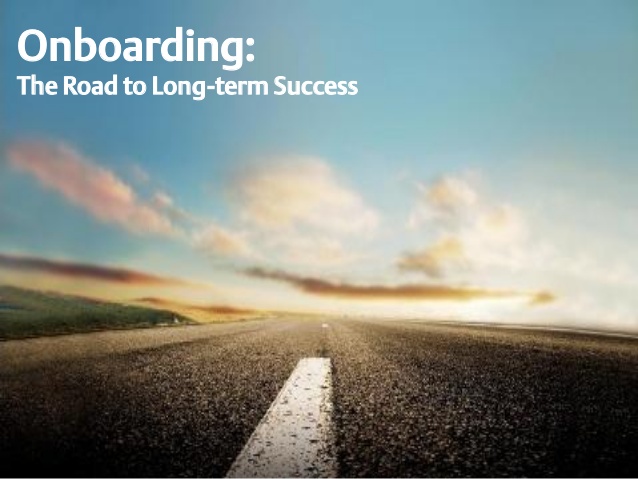OK, so you open Google+ for the first time. Not because you are a Google Groupie, but maybe because a good friend invited you to take a look. We all know those spamtaneous email notifications… You arrive at the main page. And then what? Oh no! Despair kicks in, followed by feelings of incompetence and low self-esteem. What do I do now?? Too many choices, too many known unknowns and even more unknown unknowns. Am I too stupid for Google+?
Nah, we are not stupid. There are many reasons why Google+ doesn’t work (have a look here) and none of them have to do with the intelligence of its users. Actually, Google does an ok job to get you on their pages through using Core Drive 5: Social Influence and Relatedness. In the Discovery Phase of an experience the goal is to create motivation towards trying out your product through clever marketing and messaging. And this is what they do well. But they fail at Onboarding…epically.
Let’s have a look at how not to fail like Google+ in Onboarding. I’ll show you how to design an amazing Onboarding experience using the Octalysis Framework. Also we’ll have a closer look at some good take always on how to craft a solid tutorial.
Lots of learning here, and all for free!
The Onboarding Phase of an Experience
After you have been made enthusiastic about discovering a product, the product designers then need to make you feel competent and engaged to actually want to use it. Far too often Onboarding experiences for products feel confusing or too complex. The user ends up feeling stupid.
In order to keep users engaged in this phase, you need to do two things. First, give them a real sense of Development and Accomplishment (Octalysis Core Drive 2). Second, ensure that there is plenty of feedback in the interaction that is taking place here (Octalysis Core Drive 3: Empowerment of Creativity and Feedback).
It is your goal to make users feel smart and competent and it is important to give users some easy win states (experiences of success). Small achievements therefore need to be rewarded frequently at the beginning. This in turn builds confidence and increases user engagement to continue in the experience. (“You uploaded your first Video. Well Done!”).
We mostly use two Game techniques in Octalysis Onboarding. First we will have a short look at Glowing Choices before we go into detail about the strongest Onboarding Game Technique: Step-by-Step Tutorials!
We use Glowing Choices to indicate the most desirable action by a user (for example clicking on a tutor character, that is highlighted or has an exclamation mark above its head). This way the user knows what needs to be done in order to progress in the game.
However, by all means do not force users to click on the Glowing Choice. It is better to also let them explore other options in the experience and let them figure out themselves what is the required action. If your experience is well designed, the user will end up choosing the Glowing Choice as this rewards him with the right feedback and progress in the game. In addition, the Glowing Choice indicator will remain glowing, so the user feels some interaction with the event is needed.
Step-by-step Tutorials: essentials
More guided, but also often a lot more fun, are Step-by-step Tutorials. We will spend a bit more time on this powerful Game Technique (Octalysis Core Drive 2: Accomplishment and Development). These tutorials differ from more static or passive instruction modes like introductory videos or manuals. Most people do not like to read lengthy manuals or sit through long how-to videos, so designing a guided tutorial leads to better experiences and more fun!
Did you know that when people have Fun, they remember learned material better? Research by Alfie Kohn and others have demonstrated this again and again (Link between Fun and Learning). Onboarding should therefore be fun and interactive, as it ensures that they actually understand what the tutorial was trying to convey. In MMORP Games, therefore, you will get a guided tutorial to discover game mechanics, objectives and win-states. At each step of the way you will get lots of positive feedback, which leads to feelings of accomplishment, increases happiness and improved learning!
Next to fun, Tutorials need to be about cultivating Practice. When we learn a new skill, at first that new skill may feel a bit strange, or even difficult. But as we practice, our brains adjust and after a while the new activity feels already a lot more comfortable. This is a process we call myelination.
Myeli-what? OK, let me explain… In order for the brain to absorb and pass information packets faster, you need to super charge your neurons. You do this by coating them with a white substance called Myelin, a fatty tissue that covers the ends of our brain neurons. The more Myelin, the faster we adapt and learn. As we practice, we trigger electrical signals that travel through our neurons. This leads to more Myelinate coating, which then increases the speed and strength of these electrical signals. It’s a bit like going from ADSL to Fiber Optic. The more you practice, the higher the connection speed!
Step-by-step Tutorials: more advice!
Designing Step-by-step Tutorials can be tricky, so here some advice you want to follow:
1. Minimize Text
Text kills immersion, leads to disengagement and will be skipped whenever users have the first opportunity.
2. Don’t front load
Don’t front load every piece of information the player will ever need right at the beginning of the experience. You will overwhelm them with information, which leads to exactly the unwanted Google+ effect of not knowing what to do anymore. People will get bored and will rush through the experience as fast as they can.
What you should do is to provide the player with information as and when they need it. Here, introducing interactive gameplay becomes important. Do this well and the player gets to play faster, which allows you to give them information in digestible chunks distributed throughout the Gamification experience. It also means that they’ll get to start practicing what you are teaching immediately. And learning through practice is the best way to ensure that learning goes faster and is more durable.
3. Listen to your Users
I cannot emphasize this point too much. If you have been working on a project for a year or more it’s very easy to think that things are intuitive and are obvious while they’re actually totally incomprehensible! When you build an experience and spend hours a day with it, it becomes second nature to you. That’s great but often it blinds us to what other people without the daily exposure think of it.
4. Make it Skippable
Tutorial should be skippable and shouldn’t interrupt the flow of the experience. You don’t have to force everyone to sit through a tutorial every time they start the experience again and not everybody may want to have a full-fledged tutorial. Build in a “SKIP” button goes a long way in empowering users’ feelings of autonomy in their choices (Core Drive 3: Empowerment of Creativity and Feedback).
5. Make information easily available
Anything conveyed in a tutorial should be accessible at all times. It doesn’t need to be in a highly immersive way but just designing for a help encyclopedia in the options menu or getting the user to access to how-to videos will go a long way.
6. Don’t leave it till last
Often the tutorial design is one of the last things that is designed in a Gamification project. First you want to create that awesome gameplay, that engaging narrative and the immersive quests. Much cooler right? Maybe, yes. But as a designer you need to think about how you are going to teach the user how to play the game.
Leaving that explanation until the last moment, when time pressure to deliver is mounting, will lead to shortcuts. The result is often a hastily designed clunky and front-loaded tutorial that really takes away from the users experience.
Onboarding for Experts
Now that you have gotten the basic ideas about what great onboarding can look like, let’s have a look at what Octalysis experts often design for in the Onboarding phase of Octalysis Gamification!
Beware of the main rule in Onboarding though: whatever great features and game techniques are introduced, never let them get in the way of the user achieving easy and quick win-states! Users have not yet bought into your experience and they need the dopamine-sustained feedback for continued engagement.
So, it’s great to introduce a narrative (Core Drive 1: Epic Meaning and Calling) and a 1-min animated video, or presentation with 3 to 4 images will do the trick nicely. Immediately after users have been exposed to the narrative, bring them back on the path to easy win-states. You can use the new found narrative to deepen those win-states by referring to the New Hero Role of the user for example, when they receive win-state feedback. “Yeah, John, you are shaping up to become a real Hero!”
The same counts for choosing avatars (Core Drive 4: Ownership and Possession); discovering links with other users (Core Drive 5: Social Influence and Relatedness); and dangling abilities to be unlocked, prizes to be won or status to be achieved in later Experience Phases (Core Drive 6: Scarcity and Impatience). Adding to fun with some sort of suspense design that increases Core Drive 7: Unpredictability and Curiosity. This is the Core Drive behind our infatuation with experiences that are uncertain and involve chance.
OK, enough for now. We have covered a LOT of information. I should have designed a Step-by-Step Tutorial to let you discover how to design Onboarding, I know. Come and join one of Yu-kai Chou’s workshops to get a fully immersive tutorial on how to do this.
There may still be some places available for his next workshop on 12 August! Book it here: Yu-kai Chou’s Gamification workshop on 12 August.
Oh, please feel free to bring any Google+ executives with you!
For more queries or if you want us to design an amazing Step-by-Step Tutorial, contact us:







